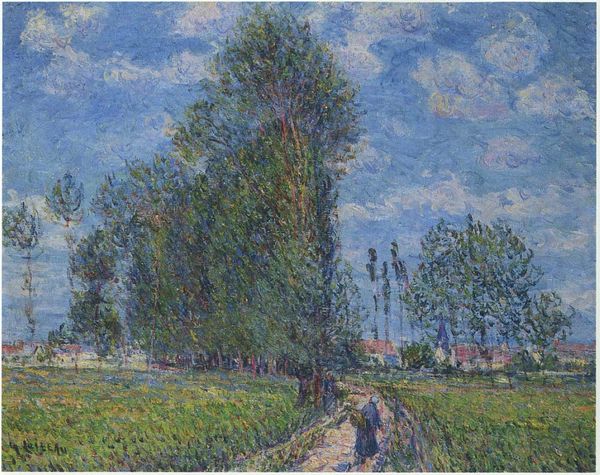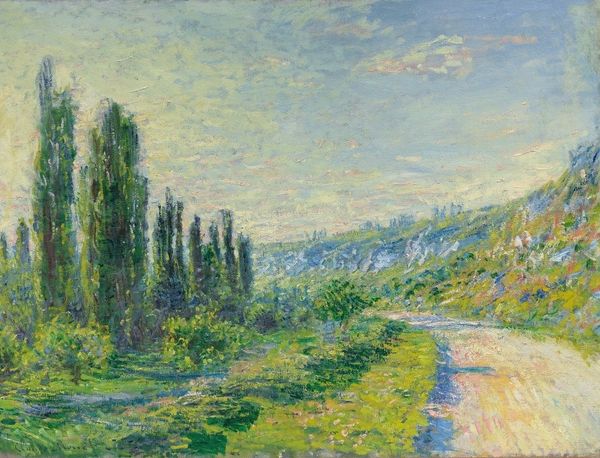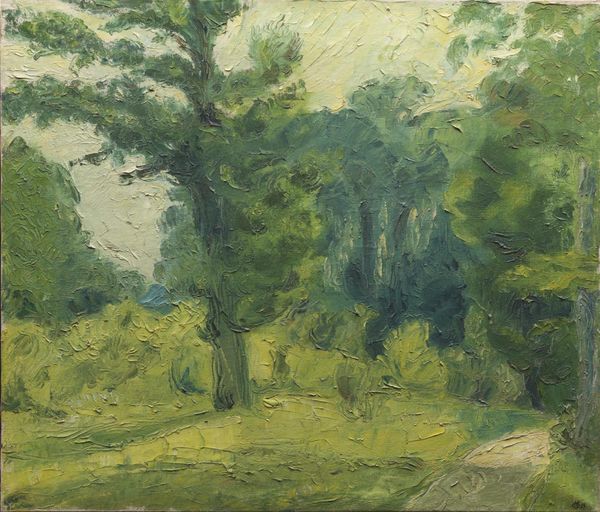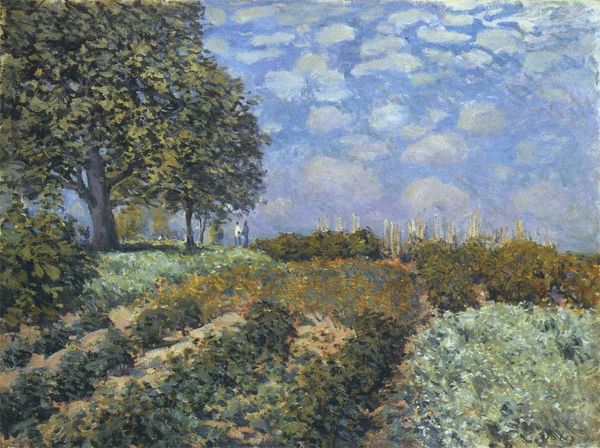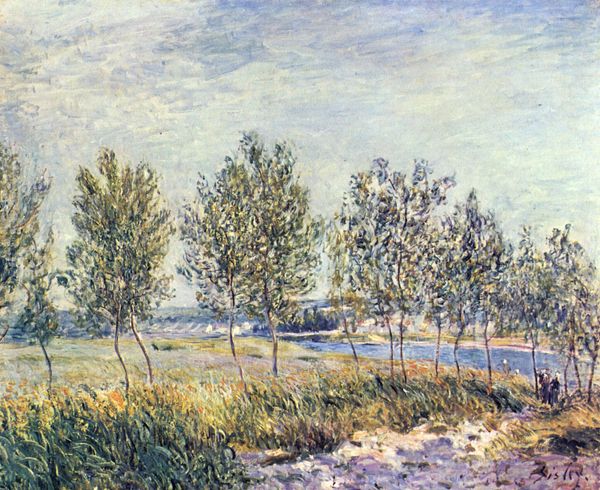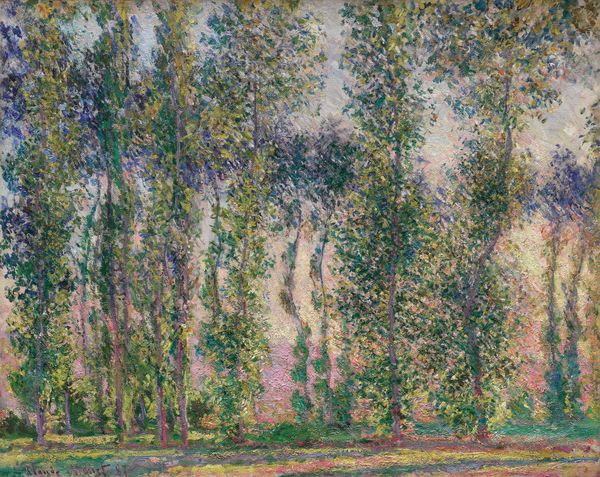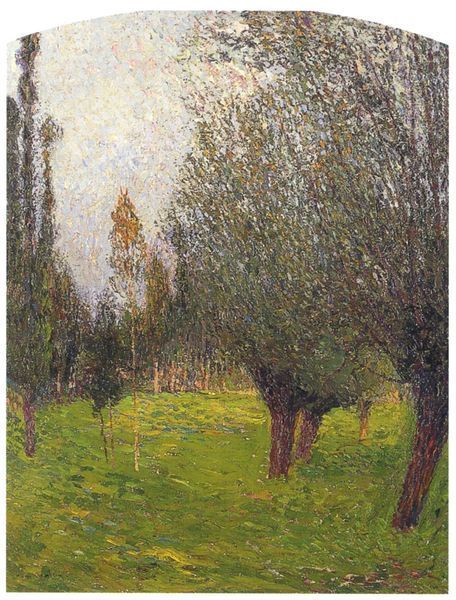
plein-air, oil-paint
#
dutch-golden-age
#
impressionism
#
plein-air
#
oil-paint
#
landscape
#
oil painting
Dimensions: 33 x 42 cm
Copyright: Public domain
Curator: So, what draws you to Van Gogh's "Way in the Voyer d'Argenson Park in Asnieres" from 1887? I see oil paint was the medium. What grabs you first? Editor: Well, the brushstrokes, I think. They're so visible, so expressive. You can almost feel the artist at work, capturing this specific moment. It seems so immediate. What about you? What stands out? Curator: Exactly! Think about what it means to use paint this way, openly displaying its material qualities. It isn't about perfectly representing a scene, but revealing the labor of making the image. Van Gogh isn't hiding the constructed nature of the artwork. How does the overt display of labor relate to Impressionism at the time? Editor: I suppose it's challenging the tradition of hiding the artist's hand. Like he's saying, "Look, this isn't just a picture; it's something someone *made*." So the context would include industrial production and value? Curator: Absolutely. The availability of manufactured paints, new production practices…and also, what about leisure, class, and access to these parks? Van Gogh is representing the democratizing effect of easily produced and commodified material—he is saying something specific about modern life, its visual representation and how these parks became stages for new class interactions. What’s fascinating about *this* piece? Editor: That’s so interesting! So, he’s commenting on the social changes by showcasing the *means* of depicting them? The accessibility of art production mirrors the park's accessibility. I’ll remember that—thanks! Curator: Of course. Material gives insight and grounds historical perspectives. Focusing on what something *is* made of gets us much closer to *why* it was made, for the social contexts and historical implications within that production and consumption.
Comments
No comments
Be the first to comment and join the conversation on the ultimate creative platform.

